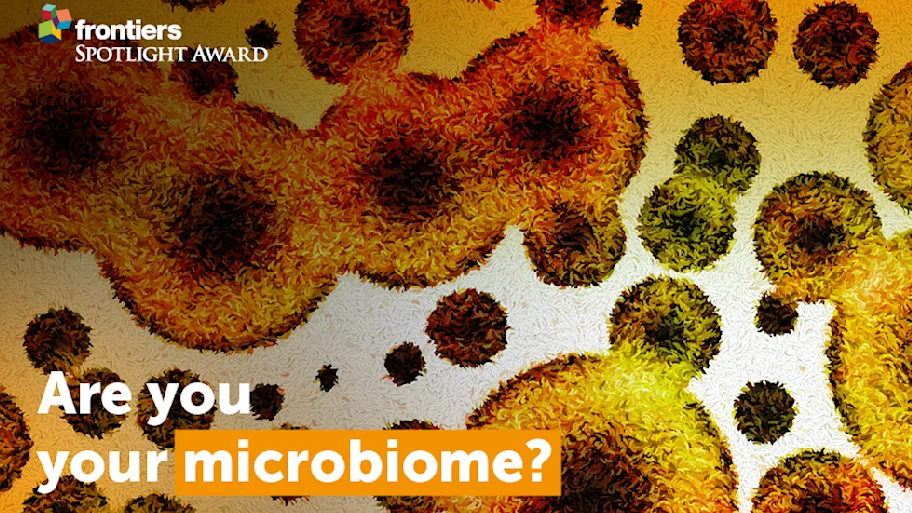
- Science news
- Featured news
- An apple carries about 100 million bacteria. Good luck washing them off.
An apple carries about 100 million bacteria. Good luck washing them off.

The forbidden fruit has never been so popular: 83 million tonnes of apples were grown in 2018 and production continues to rise. Image: Shutterstock.
Most microbes are inside the apple – but the strains depend on which bits you eat, and whether you go organic
— by Matthew Prior, Frontiers science writer
To the heroes among you who eat the whole apple: besides extra fiber, flavonoids and flavor, you’re also quaffing 10 times as many bacteria per fruit as your core-discarding counterparts.
Is this a good thing? Probably. But it might depend on how your apples were grown.
Published in Frontiers in Microbiology, a new study claims that organic apples harbor a more diverse and balanced bacterial community – which could make them healthier and tastier than conventional apples, as well as better for the environment.
An apple a day: which bacteria do we eat with organic and conventional apples?► Read original article► Download original article (pdf)
You are what you eat
Nowhere more so than your bowel.
“The bacteria, fungi and viruses in our food transiently colonize our gut,” says study senior author Professor Gabriele Berg, of Graz University of Technology, Austria. “Cooking kills most of these, so raw fruit and veg are particularly important sources of gut microbes.”
To help us choose our colonic colonists wisely, Berg’s group analyzed the microbiome of one of the world’s favorite fruits: the apple.
“83 million tonnes of apples were grown in 2018, and production continues to rise,” says Berg. “But while recent studies have mapped their fungal content, less is known about the bacteria in apples.”
The researchers compared the bacteria in conventional store-bought apples with those in visually matched fresh organic ones. Stem, peel, flesh, seeds and calyx – the straggly bit at the bottom where the flower used to be – were analyzed separately.
Microbial diversity suggests organic apple advantage
Overall, the organic and conventional apples were occupied by similar numbers of bacteria.
“Putting together the averages for each apple component, we estimate a typical 240g apple contains roughly 100 million bacteria,” reports Berg.
The majority of the bacteria are in the seeds, with the flesh accounting for most of the remainder. So, if you discard the core – for shame! – your intake falls to nearer 10 million. The question is: are these bacteria good for you?
When it comes to gut health, variety is the spice of life – and in this regard, organic apples seem to have the edge.
“Freshly harvested, organically managed apples harbor a significantly more diverse, more even and distinct bacterial community, compared to conventional ones,” explains Berg. “This variety and balance would be expected to limit overgrowth of any one species, and previous studies have reported a negative correlation between human pathogen abundance and microbiome diversity of fresh produce.”
Related: Meet the six-legged superfoods: grasshoppers top insect antioxidant-rich list
Specific groups of bacteria known for health-affecting potential also weighed in favor of organic apples.
“Escherichia-Shigella – a group of bacteria that includes known pathogens – was found in most of the conventional apple samples, but none from organic apples. For beneficial Lactobacilli – of probiotic fame – the reverse was true.”
And there may even be vindication for those who can “taste the difference” in organic produce.
“Methylobacterium, known to enhance the biosynthesis of strawberry flavor compounds, was significantly more abundant in organic apples; here especially on peel and flesh samples, which in general had a more diverse microbiota than seeds, stem or calyx.”
Consumer choice
There are some major caveats to this study. Most importantly, the conventionally grown apples were packaged and refrigerated for days before analysis. The organic apples meanwhile were analysed immediately following harvest, and were grown on a different farm — albeit in the same region of Austria.
Nevertheless, similar patterns found in apple fungal communities add some verisimilitude to Berg’s findings.
“Our results agree remarkably with a recent study on the apple fruit-associated fungal community, which revealed specificity of fungal varieties to different tissues and management practices,” comments Birgit Wasserman, Berg protégé and co-author of the study.
Since the apple fungal community is also specific to each apple variety, the bacterial analyses ought to be repeated in other cultivars.
“The microbiome and antioxidant profiles of fresh produce may one day become standard nutritional information, displayed alongside macronutrients, vitamins and minerals to guide consumers,” suggests Wasserman. “Here, another key step will be to confirm to what extent diversity in the food microbiome translates to gut microbial diversity and improved health outcomes.”
Original article: An apple a day: which bacteria do we eat with organic and conventional apples?
As part of the citizen science program Sparkling Science, this research was performed together with young people from schools in Graz, Austria. Sparkling Science is an initiative of Austria’s Federal Ministry of Education, Science and Research (BMBWF): https://www.sparklingscience.at/en.
REPUBLISHING GUIDELINES: Open access and sharing research is part of Frontiers’ mission. Unless otherwise noted, you can republish articles posted in the Frontiers news blog — as long as you include a link back to the original research. Selling the articles is not allowed.






